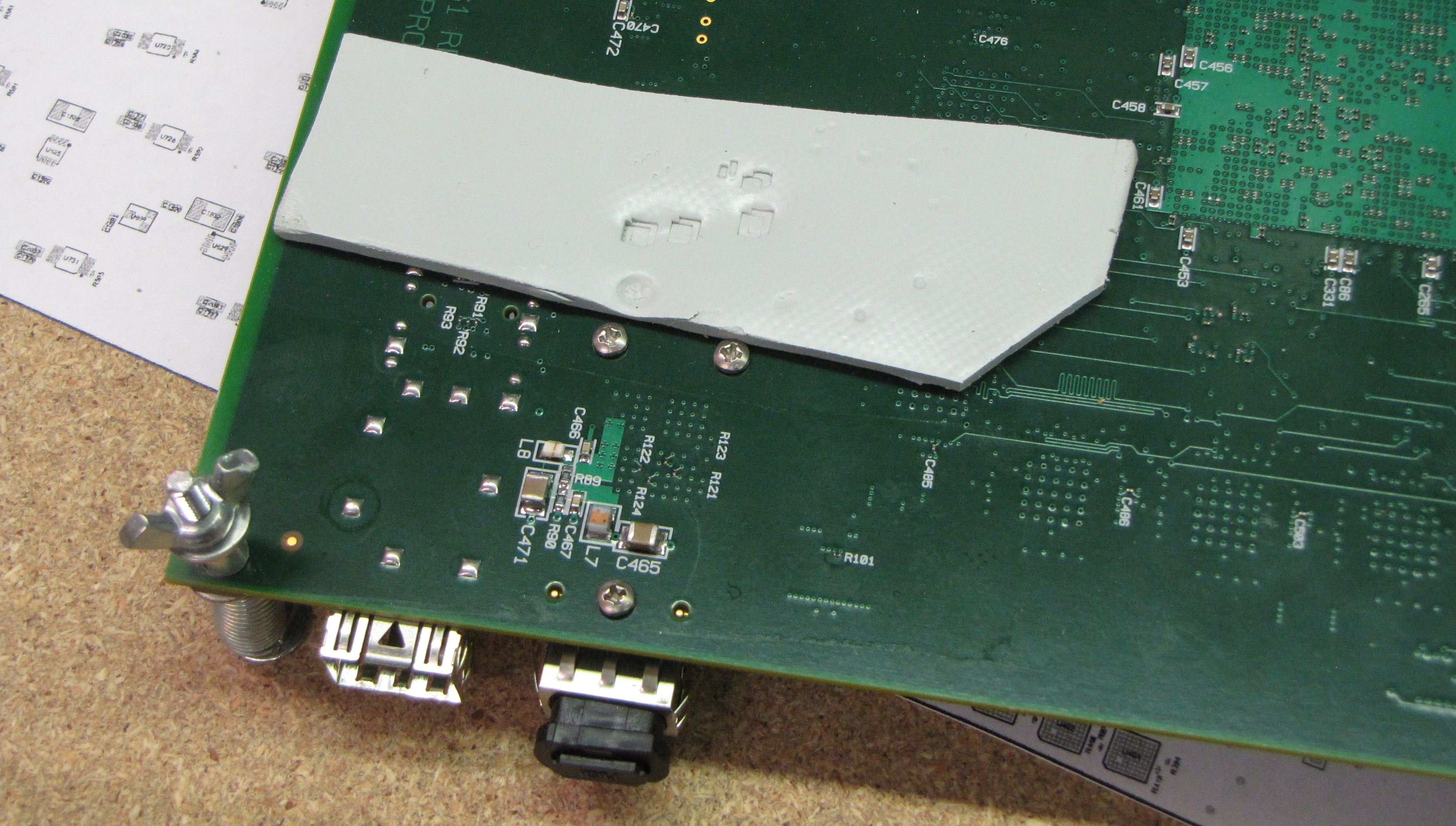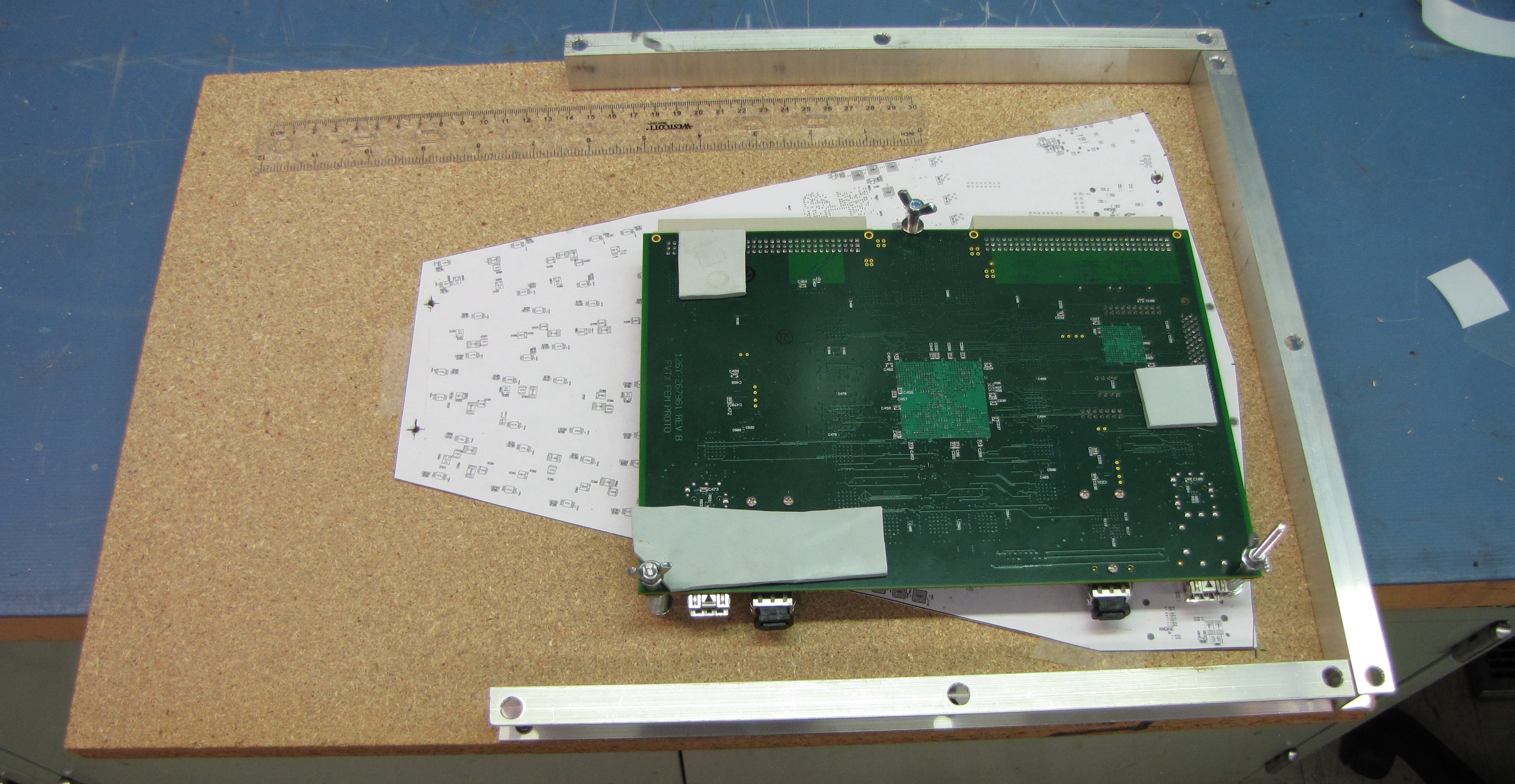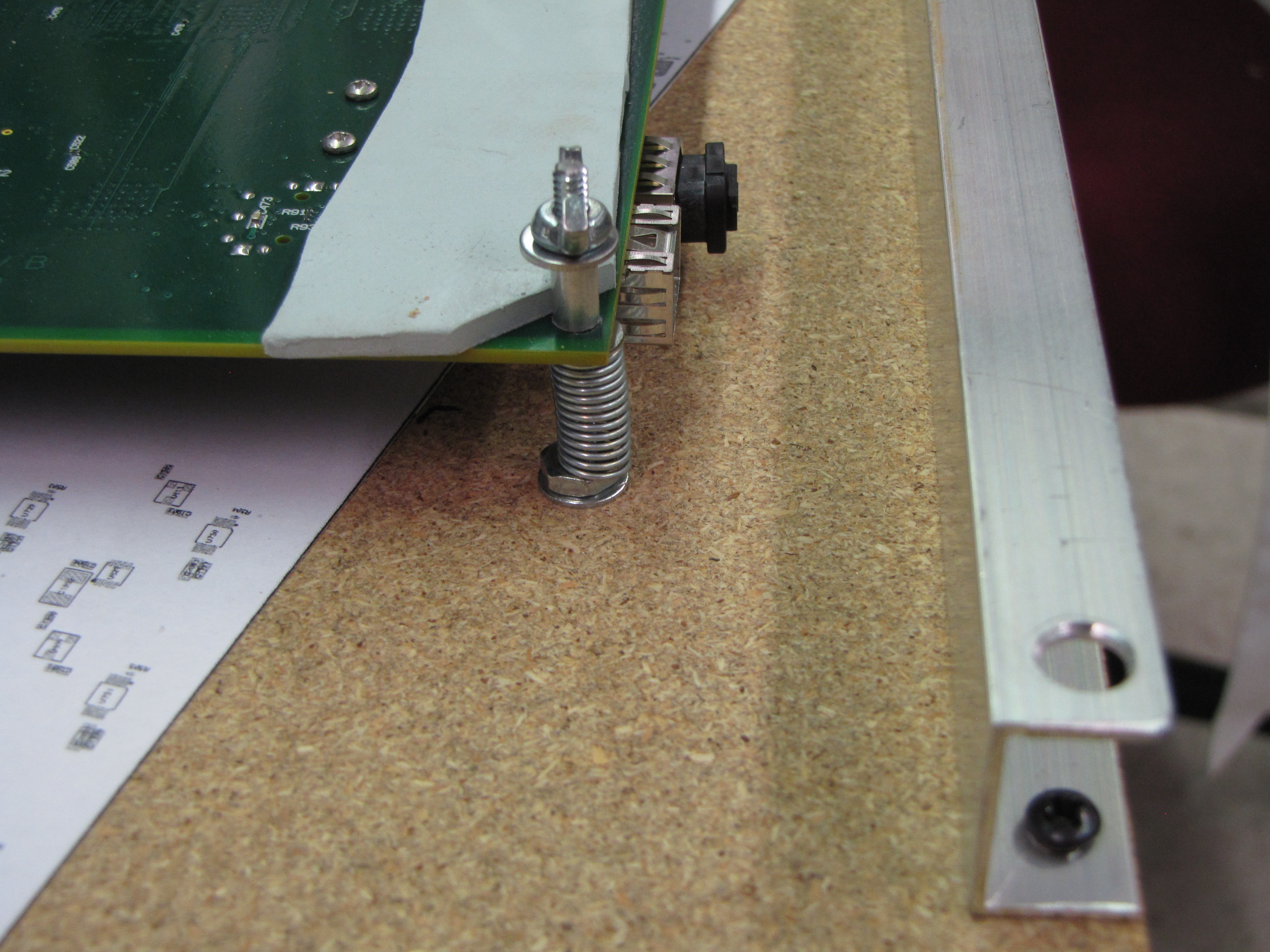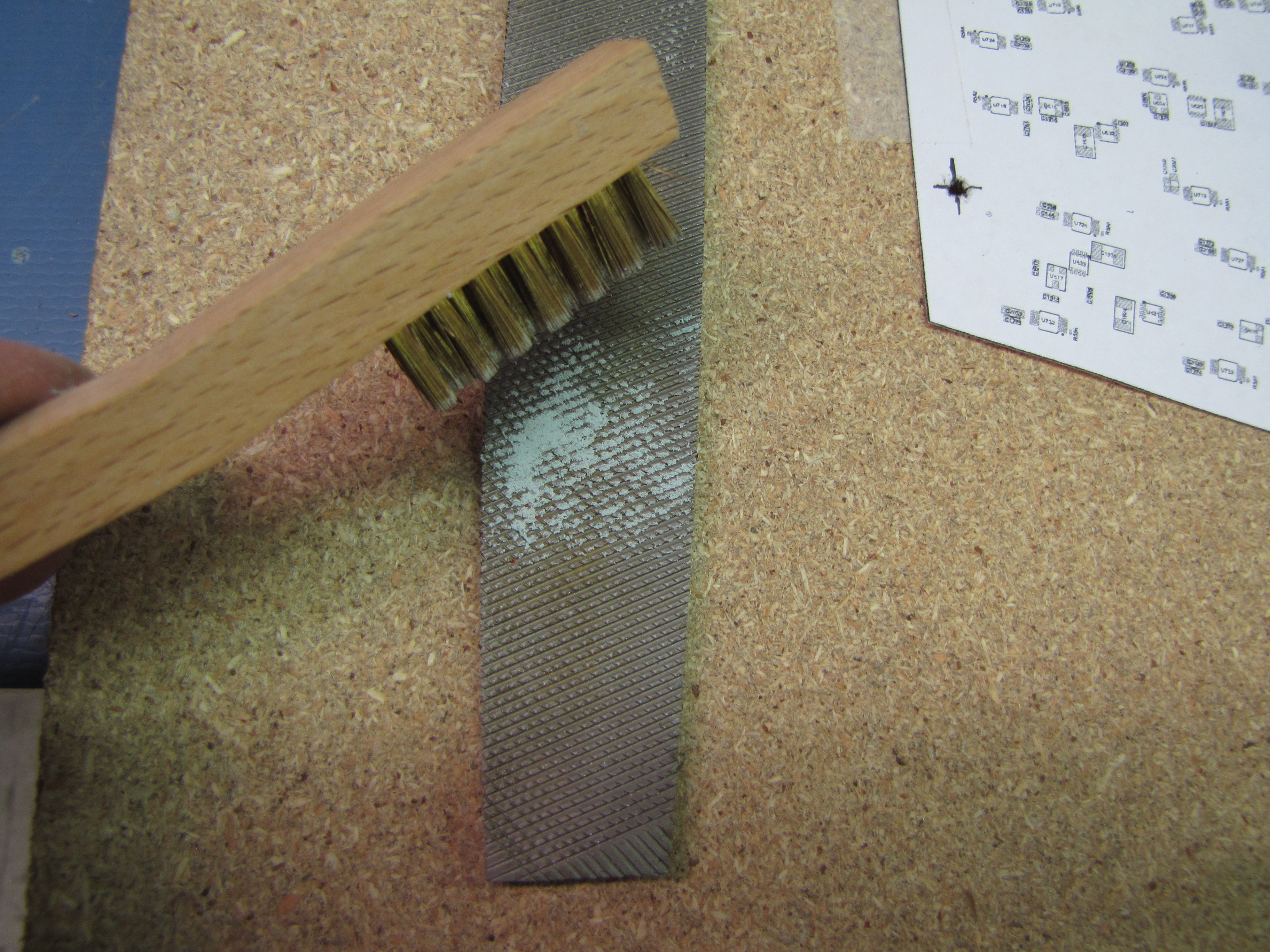| The gap-pad material that transfers the heat from the ROC to the
cooling plate is a clay-like substance that comes in 1/8" thick sheets.
On the back of the ROC are many small components, similar to these ones on
the back of a FEM board. You can press the material over these components,
but then
the surface that faces the cooling plate is no longer flat.
Shown here is a piece that has been pressed over the components and taken
off again and flipped over. You can see the indentations.
| 
|
| The jig shown here allows you to level the gap-pad surface after
it has been pressed over the backside components.
It is a flat surface, with 3 sides of 1x0.5" Aluminum U-channel.
| 
|
| The ROC board (or in this case a FEM board) is mounted on 6/32
threaded rods with a spring and
a wingnut, such that the height can be changed.
| 
|
| Adjust the height all around such that a long file, laying on the
edges of the jig, just touches the bumps in the gap-pad material.
A few short strokes, applying no pressure other than the weight of the file,
will take off the high points of the gap-pad material. Carefully raise
the board and file until all the bumps are leveled.
| 
|
| The material will clog the file quickly, so after every few strokes,
clean the file with a brass brush.
| 
|